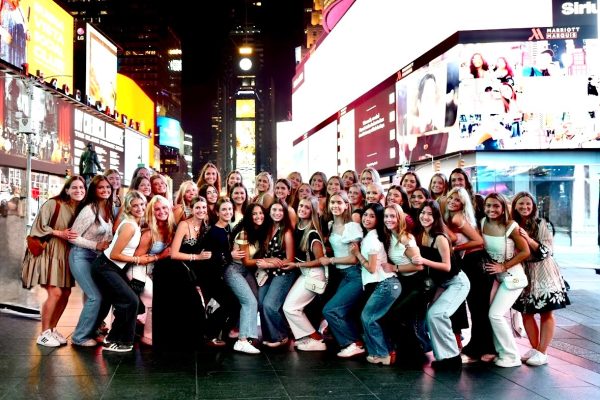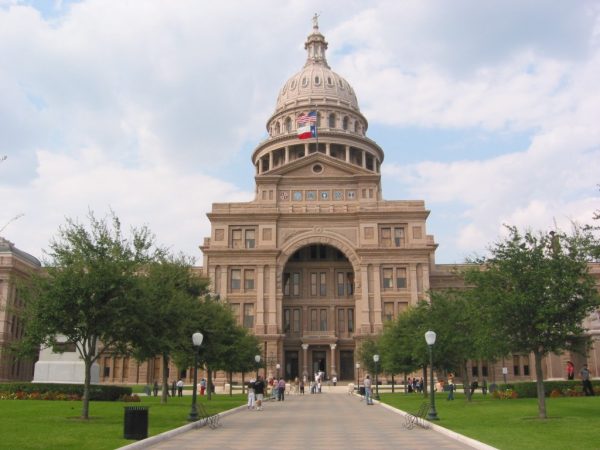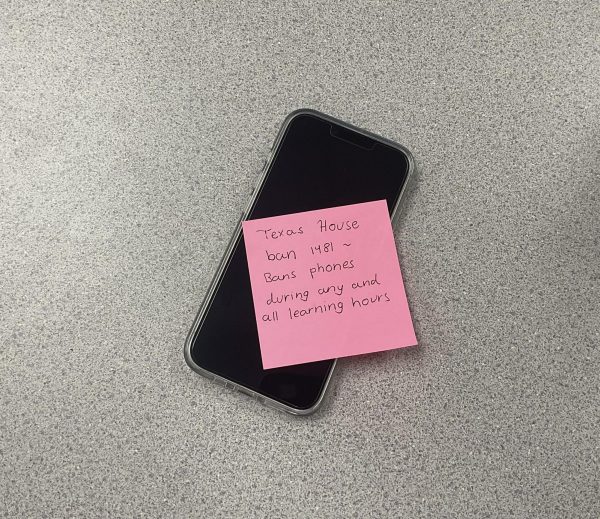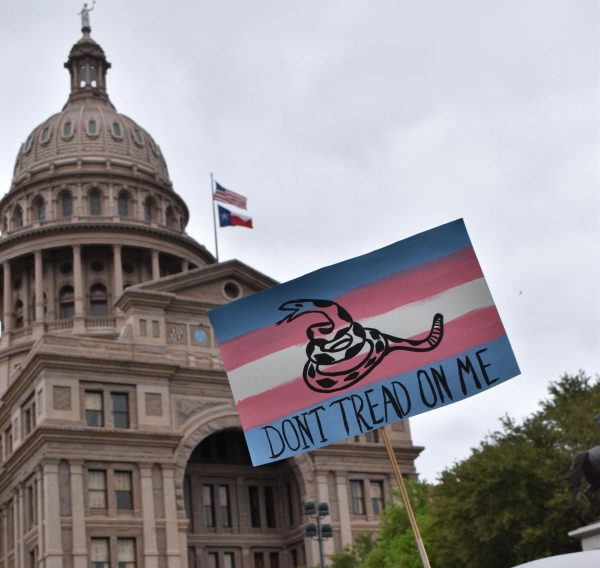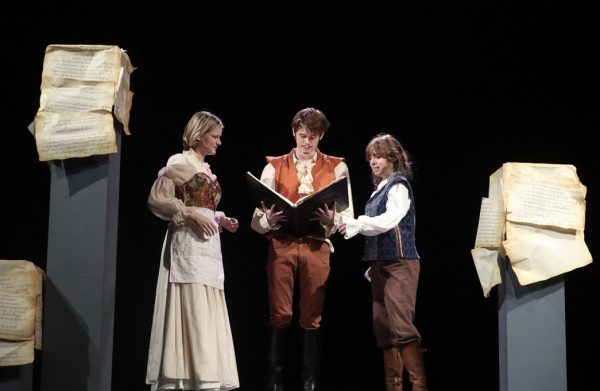Westlake students join other schools at capitol for National School Walkout
At 10 a.m. April 20, hundreds of students left their second period class and headed to the Chap Court and the stadium to honor the victims of the Feb. 14 school shooting at Marjory Stoneman Douglas High School in Parkland, FL. They sat in silence for 17 minutes while watching a slideshow on the victims before quietly returning to class.
At 10:39 a.m., some students left school and headed to Wooldridge Park to participate in the city-wide student-led walkout. Students from 16 different schools gathered until 12:30 p.m. Carrying posters and painted with calls-for-action messages, all 5,000 students marched to the capitol. Among those who participated was Michelle van Doorn, who was also one of the organizers.
“At first I was like, ‘Oh, this will be a small, Westlake-centered thing,” Michelle said. “But then a student at LASA reached out and was like, ‘Hey, we’ve got a couple of other schools around Austin and we’d love to link up with you so we can do it at the same time and share resources.’ After a while we got more schools. About a week-and-a-half later, we set up a meeting with the group of adults organizing the National School Walkout at the capitol, and they were like, ‘We’d love if all the schools that are walking out came to the capitol.’ We ended up doing that, and that’s where we came up with the idea of getting buses [to transport students] that don’t have Capital Metro to go to the capitol. In the end we got 15 or 16 schools, so it was a huge day.”
According to a Washington Post article from April, 131 children, educators and others have been killed in school shootings and another 273 have been injured. The students who participated in the walkout wanted to show the government that people currently in school are not OK with the lack of action.
“We’re here because it needs to stop,” junior Emme Blahuta said. “It’s ridiculous that even if you’re not 18 years old, you can still go to a gun show and buy a gun. Anyone can have a gun, anyone can use it — there’s no protection in place, there’s no background checks. Highly-automated weapons are being sold. It’s ridiculous how available they are, and it’s ridiculous how we’re the last country that has had this many issues that hasn’t done anything about it.”
After marching to the capitol, there were many speakers, including sophomore Jemima Abalogu. She’s a leader of Power to the Students, a new club created in March, not long after the Parkland shooting.
“I really like the March for our Lives movement because it’s putting the people affected at the center,” Jemima said. “It’s been really strong in its statement that it’s not about the Second Amendment and it’s not about taking everyone’s guns away. It’s about making sure students are safe in a place that’s supposed to be safe, and that they’re supposed to learn. When we expect students to spend every day of their lives in a place, we really need to make it safe and secure and a good environment for them.”
While some students like Jemima were pushing for change at individual schools, the students from Marjory Stoneman Douglas made themselves heard around the nation by having a town hall with CNN and making other television appearances. One of the major things they did was create the March for our Lives, a march which took place in Washington, D.C. March 24 to protest current gun laws. The movement spread to other states and has become meaningful to many people.
“It’s important for students to speak out for themselves, especially when the current government policies aren’t doing that for them,” junior Kate Hirschfeld said. “Because this generation is the future of America, and we really need to establish ourselves as us fighting for what we believe in.”
The movement has experienced a lot of criticism from various people, whether that be celebrities, politicians or everyday citizens. But Michelle said she thinks the push-back is because of misunderstandings.
“There aren’t many people that don’t support what the movement’s about because the movement’s about stopping the slaughter of children,” Michelle said. “I think that a lot of people go, ‘This movement is about gun control,’ and ‘This movement is about these kids trying to stand up to our government and take our governmental rights away.’ I don’t think that’s true. I, personally, support the Second Amendment. I’m OK with our history and I’m OK with people owning a gun, I just think there need to be more regulated background checks and more simple common-sense gun laws, and that has such a bad stigma around it that they decide it’s a bad movement they don’t want to support.”

